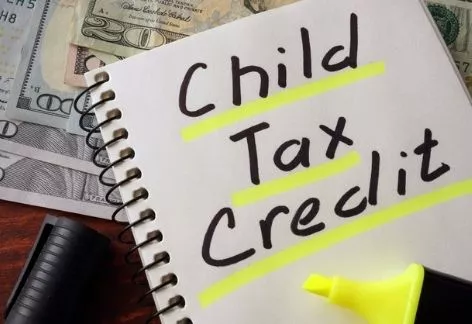Payments for the new IRS Child Tax Credit are to begin July 15, 2021, but what is this type of credit, how has it changed, and how may it affect you? Will you receive the new Child Tax Credit, or should you opt out?
While the COVID-19 pandemic continues to decline as vaccination programs pick up around the world, millions of families are still left reeling from the financial and social impact of the virus, which has led to the deaths of over 600,000 Americans, and over 4 million deaths worldwide.
As part of the current administration’s larger $1.9 trillion American Rescue Plan, the IRS has announced that about 39 million American families will be eligible receive up to $1,800 in the form of several monthly checks until December 2021, starting July 15. These payments are being distributed in the form of an expanded IRS Child Tax Credit.
However, there is a caveat to this federal bonus – one that may inspire some families to decline it. First, let’s go over the expanded Child Tax Credit, and how it’s been changed this year.
What is the IRS Child Tax Credit?
What is a tax credit? Tax credits are different from tax refunds, in that they represent money the IRS gives you to write off your taxes. Anything left over after your taxes are paid gets sent your way in the form of a check.
The IRS Child Tax Credit is designed to help low- and middle-income families eligible for the tax credit alleviate some of the financial pressure of growing a family.
Changes made to the Child Tax Credit this year, to help families still affected by COVID, include additional funds (up to $3,600 per child, up from $2,000) as well as a cash advance.
Because payments this year are starting halfway through 2021, half of the new IRS Child Tax Credit will be sent out to bank accounts across the country (hence the $1,800 to be paid out over the next few months), while the other half can be claimed as a tax credit at the end of the 2021 tax year (on your 2021 tax return).
Furthermore, there has been news that the current administration is proposing to extend the monthly cash advance for five more years. Whether or not we’ll hear more on that idea remains to be seen. If the tax credit payments get extended without any major changes, that would mean the entire annual Child Tax Credit would be paid out in monthly chunks.
Potential Downfalls of the Updated IRS Child Tax Credit
The catch? You need to be careful about how much of a tax credit you’re getting. Unlike the stimulus checks, where the government sent you what it sent you, and you were allowed to keep the excess if you received more than you were entitled to, this tax credit is different.
If the amount you receive either in cash or as a tax credit at the end of the year exceeds what you are eligible for based on number of children, filing status, and income, you may need to pay the IRS back what you were overpaid. Whether or not this is subject to change isn’t clear, but the IRS’s current stance is that it is entitled to demand some or all of the excess payments back.
In other words: if you’re entitled to an IRS Child Tax Credit this year, try to be careful about how much you’re entitled to, and be strict with your bookkeeping. Consider working with a tax professional this year.
How Do I Qualify for the Child Tax Credit?
The expanded IRS Child Tax Credit applies per child up to age 17 (as of December 31, 2021). Before the recent changes, it was limited to children up to age 16. The maximum annual tax credit per child was also increased, from $2,000 to $3,600 (for children under age 6) and $3,000 (for children between ages 6 and 17).
Qualifying for the Child Tax Credit is largely a matter of income level and filing status. The annual income thresholds for families currently stands at:
-
- $75,000 or less for single taxpayers
- $112,500 or less for heads of household
- $150,000 or less for married couples filing a joint return and qualified widows and widowers
If you earn more than that, you may still be able to apply for the enhanced IRS Child Tax Credit, but it will be a lower amount per child, depending on how much more you earn.
Right now, the values are at $50 less per child, per $1,000 of annual income above the threshold. At a certain income level, the enhanced IRS Child Tax Credit is no longer available, but regular the Child Tax Credit may still be taken advantage of up to a higher income level.
If you’re having trouble, the IRS has a qualification tool to help taxpayers figure out their eligibility.
Determining Your Eligibility
To recap what you generally need to be eligible:
-
- You will have had to have filed a tax return in 2019 or 2020, and must have already claimed the Child Tax Credit on said return; or
- You’ve given your info to the IRS for the Economic Impact Payments of 2020 as a non-filer (you can sign up with that link); and
- You have a place of residence in the United States for more than half a year, or file a joint return with a spouse with a place of residence in the United States for more than half a year; and
- You have one or more children under the age of 18 (as of December 31, 2021) with a valid Social Security Number; and
- You earn less than the cap for the Child Tax Credit.
If this seems confusing, it’s because it is. Consider working with a tax professional who can provide tax preparation services and guide you through these requirements.
Should I Have Received a Letter?
Not all, but many taxpayers who are already eligible for an IRS Child Tax Credit will have received a Letter 6416 or 6416-A from the IRS, titled the Advance Child Tax Credit Outreach letter. These were sent out to taxpayers based on their 2019 or 2020 returns.
To recap, under the new expanded IRS Child Tax Credit, the following changes have been made:
-
- Those eligible for the maximum amount under 2021 rules will receive $250 per month, per child between the ages of 6 and 17, and $300 per month, per child under the age of 6, until the end of 2021.
- Eligibility will include children up to age 17 as of December 31, 2021.
- The other half of the year’s estimated credit will be available as a refundable tax credit on your income tax return, even if you do not file income taxes. However, you will need to file or apply for the credit to receive it.
If you’re wondering about eligibility or how much tax credit you’re qualifying for this year, be sure to speak to a tax professional.

